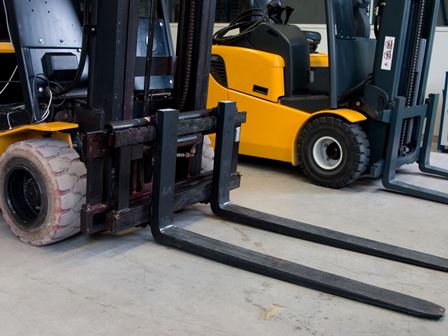The fork is one of the most important components of the forklift, and it is critical that all forklift operators keep their forks in good working order.
A damaged fork can have unnecessary cost consequences, from destroying valuable cargo to endangering your safety or that of those around you.
Inspection of the thickness and condition of the forklift should absolutely be part of every daily checklist, as you need to make sure its thickness is adequate for lifting loads throughout the day.
Here is a basic overview of what to look for when inspecting the thickness of your forklift fork.
Fork thickness inspection – At least one formal inspection should be performed every 12 months.
However, in addition to your basic daily inspection, you should perform a professional inspection more often than once a year.
The exact frequency depends on the working conditions you are operating in, as well as the condition of the forklift.
The forklift should be inspected by a trained person or technician or a specialized forklift repair service company.
What should you look for when inspecting your fork?
Whether you are conducting your daily review or a more substantial review, there are a number of specifications to look for. These include:
- cracks on the fork surface
- whether the fork is straight or not
- the thickness of the fork and
- the amount of visible wear.
In some cases, like there are cracks on the surface, you probably won’t need to solder. However, more significant wear and tear will require repair.
Some forks are made from specialized materials. For example, stainless steel forks are often used when handling food or chemicals to provide additional protection against cross contamination.

Forklift Fork Dimensions
They are an integral part of the forklift and ensuring you are using the correct ones and that they are in good condition is essential to both the safety of personnel, but also the forklift and the load.
